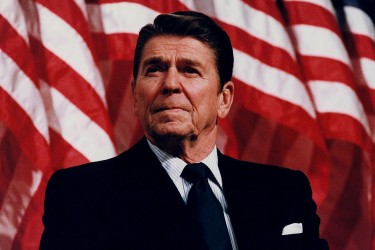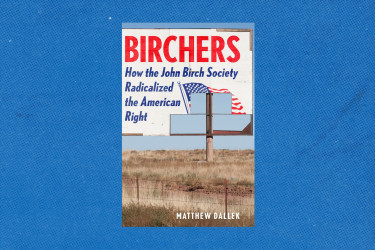As in culturally charged showdowns between the heavy-breathing masses and their sophisticated egghead oppressors, the paranoiac battle for power is an all-or-nothing proposition—a question of 100 percent partisanship, in Hofstadter’s formulation. “Since the enemy is thought of as being totally evil and unappeasable, he must be totally eliminated,” an outlook that “leads to the formulation of hopelessly demanding and unrealistic goals.” This all-or-nothing worldview, and the failure it all but ensures, only heightens the paranoid stylist’s already-debilitating sense of abiding insignificance before the rigged dramas of world history: “Even partial success leaves him with the same sense of powerlessness with which he began,” Hofstadter writes, “and this in turn only strengthens his awareness of the vast and terrifying quality of the enemy he opposes.”
It’s easy to see why Hofstadter’s essay made sense to liberal intellectuals circa 1964. Barry Goldwater’s capture of the Republican nomination looked for all the world like a chiliastic revivalist hijacking of Cold War politics on the right. Indeed, in one of the uncollected essays on the Goldwater phenomenon reprinted in this new anthology, Hofstadter describes Goldwater as a “dreamer” and “visionary” steeped in “messianic idealism” who tapped into “a deep millennial strain in the American consciousness.” And Goldwater’s crushing defeat in the 1964 presidential balloting seemed to be just the sort of tragic-heroic political and cultural defeat that feeds lost-cause narratives—and terminally aggrieved fundraising appeals—among the diehard anti-government right.
But of course the entire subsequent history of the modern right’s ascension to power makes precisely the opposite point. The alleged retreat of fundamentalists from public life since the Scopes Trial debacle in 1925 has always been something of a liberal cultural lullaby, as Matthew Avery Sutton demonstrated in his 2014 study, American Apocalypse. And the paranoid style, far from being an expression of powerlessness, has become perhaps the most potent and reliable model of retaining and expanding power on the American right—particularly as its leaders continue to cleave to a governing agenda that is unpopular with the polled majority of American voters. Overheated reveries depicting the cultural and political persecution of the right no longer merely drive crank ideological fantasizing and end-time sermonizing; they now fuel vast swaths of online and broadcast reporting on the right, while building an astonishingly insular narrative of relentless and unappeasable persecution within the Oval Office itself.
Far from serving as a breakdown of the vigilante mind, the paranoid style would appear to be a leading-edge mode of adaptation to a civically denuded world of siloed and commercially deformed information flows. The explanatory power of Hofstadter’s best-known thesis has indeed become so weak that it’s tempting to reverse its polarity, and suggest that the armchair psychoanalysis popularized under the heading of the paranoid style is itself a compensatory fable of liberal powerlessness, bespeaking a failure of the liberal mind to adapt to radically altered cultural and political conditions.



















